Mission District, San Francisco
| Mission District The Mission | |
|---|---|
| Neighborhood | |
|
Clarion Alley Mural Project | |
 Mission District Location within Central San Francisco | |
| Coordinates: 37°46′N 122°25′W / 37.76°N 122.42°WCoordinates: 37°46′N 122°25′W / 37.76°N 122.42°W | |
| Country |
|
| State |
|
| City and county | San Francisco |
| Government | |
| • Supervisor | David Campos |
| • Assemblymember | David Chiu (D)[1] |
| • State senator | Scott Wiener (D)[1] |
| • U. S. rep. | Nancy Pelosi (D)[2] |
| Area[3] | |
| • Land | 1.865 sq mi (4.83 km2) |
| Population (2008)[3] | |
| • Total | 47,234 |
| • Density | 25,329/sq mi (9,780/km2) |
| Time zone | Pacific (UTC−8) |
| • Summer (DST) | PDT (UTC−7) |
| ZIP codes | 94103, 94110 |
| Area codes | 415/628 |
The Mission District, also commonly called "The Mission", is a neighborhood in San Francisco, California, United States, originally known as "the Mission lands"[4] meaning the lands belonging to the sixth Alta California mission, Mission San Francisco de Asis. This mission, San Francisco's oldest standing building, is located in the northwest area of the neighborhood.
Location and climate
The Mission District is located in east-central San Francisco. It is bordered to the east by U.S. Route 101, which forms the boundary between the eastern portion of the district, known as "Inner Mission", and its eastern neighbor, Potrero Hill. Sanchez Street separates the neighborhood from Eureka Valley (containing the sub-district known as "the Castro") to the north west and Noe Valley to the south west. The part of the neighborhood from Valencia Street to Sanchez Street, north of 20th Street, is known as the "Mission Dolores" neighborhood. South of 20th Street towards 22nd Street, and between Valencia and Dolores Streets is a distinct neighborhood known as Liberty Hill.[5] Cesar Chavez Street (formerly Army Street) is the southern border; across Cesar Chavez Street is the Bernal Heights neighborhood. North of the Mission District is the South of Market neighborhood, bordered roughly by Duboce Avenue and the elevated highway of the Central Freeway which runs above 13th Street.
The principal thoroughfare of the Mission District is Mission Street. South of the Mission District, along Mission Street, are the Excelsior and Crocker-Amazon neighborhoods, sometimes referred to as the "Outer Mission" (not to be confused with the actual Outer Mission neighborhood). The Mission District is part of San Francisco's supervisorial districts 6, 9 and 10.
The Mission is often warmer and sunnier than other parts of San Francisco. The microclimates of San Francisco create a system by which each neighborhood can have different weather at any given time, although this phenomenon tends to be less pronounced during the winter months. The Mission's geographical location insulates it from the fog and wind from the west. This climatic phenomenon becomes apparent to visitors who walk downhill from 24th Street in the west from Noe Valley (where clouds from Twin Peaks in the west tend to accumulate on foggy days) towards Mission Street in the east, partly because Noe Valley is on higher ground whereas the Inner Mission is at a lower elevation.[6]
The Mission includes four recognized sub-districts.[7] The northeastern quadrant, adjacent to Potrero Hill is known as a center for high tech startup businesses including some chic bars and restaurants. The northwest quadrant along Dolores Street is famous for Victorian mansions and the popular Dolores Park at 18th Street. Two main commercial zones, known as the Valencia corridor (Valencia St, from about 15th to 22nd) and the 24th Street corridor known as Calle 24[8][9] in the south central part of the Mission District are both very popular destinations for their restaurants, bars, galleries and street life.
History
Native Peoples and Spanish Colonization
Prior to the arrival of Spanish missionaries, the area which now includes the Mission District was inhabited by the Ohlone people who populated much of the San Francisco bay area. The Yelamu Indians inhabited the region for over 2,000 years. Spanish missionaries arrived in the area during the late 18th century. They found these people living in two villages on Mission Creek. It was here that a Spanish priest named Father Francisco Palóu founded Mission San Francisco de Asis on June 29, 1776. The Mission was moved from the shore of Laguna Dolores to its current location in 1783.[10] Franciscan friars are reported to have used Ohlone slave labor to complete the Mission in 1791.[11] This period marked the beginning of the end of the Yelamu culture. The Indian population at Mission Dolores dropped from 400 to 50 between 1833 and 1841.
San Francisco's southern expansion
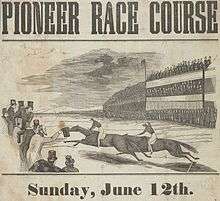
Ranchos owned by Spanish-Mexican families such as the Valenciano, Guerrero, Dolores, Bernal, Noé and De Haro continued in the area, separated from the town of Yerba Buena, later renamed San Francisco (centered around Portsmouth Square) by a two-mile wooden plank road (later paved and renamed Mission Street).
The lands around the nearly abandoned mission church became a focal point of raffish attractions[12] including bull and bear fighting, horse racing, baseball and dueling. A famous beer parlor resort known as The Willows was located along Mission Creek just south of 18th Street between Mission Street and San Carlos Street.[13] From 1865 to 1891, a large conservatory and zoo known as Woodward's Gardens covered two city blocks bounded by Mission Street, Valencia Street, 13th Street, and 15th Street.[14] In the decades after the Gold Rush, the town of San Francisco quickly expanded, and the Mission lands were developed and subdivided into housing plots for working-class immigrants, largely German, Irish, and Italian,[12] and also for industrial uses.
As the city grew in the decades following the Gold Rush, the Mission District became home to the first professional baseball stadium in California, opened in 1868 and known as Recreation Grounds seating 17,000 people which was located at Folsom and 25th Streets; a portion of the grounds remain as present day Garfield Square.[15] Also, in the 20th century, the Mission District was home to two other baseball stadiums, Recreation Park located at 14th and Valencia and Seals Stadium located at 16th and Bryant with both these stadiums being used by the baseball team named after the Mission District known as the Mission Reds and the San Francisco Seals.
Earthquakes and population shifts
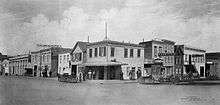
During California's early statehood period, in the 19th and 20th century, large numbers of Irish and German immigrant workers moved into the area. Development and settlement intensified after the 1906 earthquake, as many displaced businesses and residents moved into the area, making Mission Street a major commercial thoroughfare. In 1926, the Polish community of San Francisco converted a church on 22nd Street and Shotwell Street and opened its doors as the Polish Club of San Francisco; it is referred to today as the "Dom Polski", or Polish Home. The Irish American community made its mark on the area during this time, with notable residents such as etymologist Peter Tamony calling the Mission home. During the 1940-1960s, a large number of Mexican immigrants moved into the area—displaced from an earlier "Mexican Barrio" located on Rincon Hill in order to create the western landing of the Bay Bridge—initiating white flight, giving the Mission a heavily Chicano/Latino character for which it continues to be known today. During the 1960s, Central American immigration has contributed to a Central American presence that outnumbers Mexicans since the 1960s.
1970s–1990s
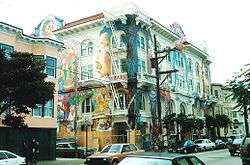
In the 1960s and 1970s, the Chicano/Latino population in the western part of the Mission (including the Valencia Corridor) declined somewhat and more middle-class young people moved in, including gay and lesbian people (alongside the existing LGBTQ Latino population).[16] From the mid-1970s through the 1980s, the Valencia Street corridor included one of the most concentrated and visible lesbian neighborhoods in the United States.[16] The Women's Building and The Lexington Club were part of that community.
In the late 1970s and early 1980s the Valencia Street corridor had a lively punk nightlife featuring the bands The Offs, The Avengers, the Dead Kennedys, Flipper, and several clubs including The Offensive, The Deaf Club, Valencia Tool & Die and The Farm. The former fire station on 16th Street, called the Compound, sported what was commonly referred to as "the punk mall", an establishment that catered to punk style and culture. On South Van Ness, Target Video and Damage magazine were located in a three-story warehouse. The former Hamms brewery was converted to a punk living/rehearsal building, popularly known as The Vats. The neighborhood was dubbed "the New Bohemia" by the San Francisco Chronicle in 1995.[17]
In the 1980s and 1990s, the neighborhood received a higher influx of immigrants and refugees from Central America, the Middle East and South America fleeing civil wars and political instability at the time. These immigrants brought in many Central American banks and companies which would set up branches, offices, and regional headquarters on Mission Street.
1990s–present
From the late 1990s through the 2010s, and especially during the dot-com boom, young urban professionals, moved into the area, initiating gentrification, raising rent and housing prices,[18] with a number of Latino American middle-class families as well as artists moving to the Outer Mission area, or out of the city entirely to the suburbs of East Bay and South Bay area. Despite rising rent and housing prices, many Mexican and Central American immigrants continue to reside in the Mission, although the neighborhood's high rents and home prices have led to the Latino population dropping by 20% over the last decade.[19] However, in 2008 the Mission still had a reputation of being artist-friendly.[20] The Mission remains the cultural nexus and epicenter of San Francisco's, and to a lesser extent, the Bay Area's Nicaraguan, Salvadoran and Guatemalan community. While Mexican, Salvadoran, and other Latin American businesses are pervasive throughout the neighborhood, residences are not evenly distributed. Of the neighborhood's Chicano/Latino residents, most live on the eastern and southern sides. The western and northern sides of the neighborhood are more affluent and Caucasian.[21]
Landmarks and features
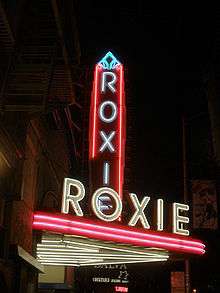



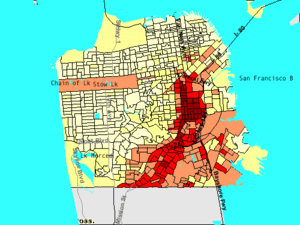
Mission Dolores, the eponymous former mission located the far western border of the neighborhood on Dolores Street, continues to operate as a museum and as a California Historical Landmark, while the newer basilica built and opened next to it in 1913 continues to have an active congregation.
Dolores Park (Mission Dolores Park) is the largest park in the neighborhood, and one of the most popular parks in the city. Dolores Park is near Mission Dolores. Across from Dolores Park is Mission High School, built in 1927 in the Mediterranean Revival style.
Kink.com headquarters are featured in a castle-like building located at 14th and Mission that was built as an armory for the U.S. Army and California National Guard. It served as the Headquarters of the 250th Coast Artillery and the 49th Infantry, also known as the 49ers.
Food
The Mission district is also famous and influential for its restaurants. Dozens of taquerías are located throughout the neighborhood, showcasing a localized styling of Mexican food. San Francisco is the original home of the Mission burrito.[22] There is also a high concentration of Salvadoran, Guatemalan, and Nicaraguan restaurants there as well as a large number of street food vendors.[23] In the last couple decades a number of Mission restaurants have gained national attention, most notably the five restaurants who have received Michelin stars for 2017: Commonwealth, Lazy Bear, Aster, Californios, and Al's Place.[24] A large number of other restaurants are also popular, including: Mission Chinese Food, Mission Pie, Bar Tartine, La Taqueria, Papalote, Foreign Cinema on Mission Street, and Delfina on 18th.[25][26]
Art scene
Numerous Latino artistic and cultural institutions are based in the Mission. These organizations were founded during the social and cultural renaissance of the late 1960s and early 1970s. Latino community artists and activists of the time organized to create community-based arts organizations that were reflective of the Latino aesthetic and cultural traditions. The Mission Cultural Center for the Latino Arts, established by Latino artists and activists, is an art space that was founded in 1976 in a space that was formerly a furniture store. The local bilingual newspaper, El Tecolote, was founded in 1970. The Mission's Galería de la Raza, founded by local artists active in el Movimiento (the Chicano civil rights movement), is a nationally recognized arts organization, also founded during this time of cultural and social renaissance in the Mission, in 1971. Late May, the city's annual Carnaval festival and parade marches down Mission Street. Inspired by the festival in Rio de Janeiro, it is held in late May instead of the traditional late February to take advantage of better weather. The first Carnaval in San Francisco happened in 1978, with less than 100 people dancing in a parade that went around Precita Park. Alejandro Murguía (born 1949) is an American poet, short story writer, editor and filmmaker who was named San Francisco Poet Laureate in 2012. He is known for his writings about the Mission District where he has been a long-time resident.
Due to the existing cultural attractions, less expensive housing and commercial space, and the high density of restaurants and drinking establishments, the Mission is a magnet for young people. An independent arts community also arose and, since the 1990s, the area has been home to the Mission School art movement. Many studios, galleries, performance spaces, and public art projects are located in the Mission, including the Project Artaud, 1890 Bryant St Studios, Southern Exposure, Art Explosion Studios, City Art Collective Gallery, Artists' Television Access, Savernack Street, and the oldest, alternative, not-for-profit art space in the city of San Francisco, Intersection for the Arts. There are more than 500 Mission artists listed on Mission Artists United site put together by Mission artists. The Roxie Theater, the oldest continuously operating movie theater in San Francisco, is host to repertory and independent films as well as local film festivals. Poets, musicians, emcees, and other artists sometimes gather on the southwest corner of the 16th and Mission intersection to perform.[27] Dance Mission Theater is a nonprofit performance venue and dance school in the neighborhood as well.[28]
Murals
Throughout the Mission walls and fences are decorated with murals initiated by the Chicano Art Mural Movement of the 1970s[29] and inspired by the traditional Mexican paintings made famous by Diego Rivera. Some of the more significant mural installations are located on Balmy Alley and Clarion Alley. Many of these murals have been painted or supported by the Precita Eyes muralist organization.
Music scene
The Mission is rich in musical groups and performances. Mariachi bands play in restaurants throughout the district, especially in the restaurants congregated around Valencia and Mission in the northeast portion of the district. Carlos Santana spent his teenage years in the Mission, graduating from Mission High School in 1965. He has often returned to the neighborhood, including for a live concert with his band Santana that was recorded in 1969,[30] and for the KQED documentary "The Mission" filmed in 1994.[31]
The locally inspired song "Mission in the Rain" by Robert Hunter and Jerry Garcia appeared on Garcia's solo album Reflections, and was played by the Grateful Dead five times in concert in 1976.[32]
Classical music is heard in the concert hall of the Community Music Center on Capp Street.[33]
Elbo Room, a bar/live music venue on Valencia Street, is home to Afrolicious, and Dub Mission, a weekly reggae/dub party started in 1996 by DJ Sep and over the years has brought many luminaries of reggae and dub music to perform there.
The Mission District is also very popular for its influencing Hip-Hop/Rap music scene. Record labels like Black N Brown/Thizz Latin, and Latin Ghetto Ent. help put Mission District rappers, like Goldtoes, Mousie, Gangsta Flea, The Goodfelonz, Mr. Kee, 10sion, and Don Louis & Colicious, get exposure through various compilations such as 17 Reasons, 18 Wit A Bullet, Organized Crime, Filthy Livin' In The Mission, The Daily Grind's Fillmoe 2 Da Mission, and many others. There is a new generation of young and upcoming rappers who are emerging from this neighborhood such as G-One (R.I.P.), Los Da Rockstar, Gabz La Nueva Melodia, DJ Blaze, Loco C, Young Mix, Yung Dunn, Monk, and up-and-coming artist Skuchi to name a few. Other prominent musicians and musical personalities include alternative rock bands and musicians Luscious Jackson, Faith No More, The Looters, Primus, Chuck Prophet & The Mission Express, Beck, Jawbreaker. Salsa music performers Los Mocosos and Cesar Ascarrunz.
Visual arts
Some well-known artists associated with the Mission District include
- Lil Tuffy (designer/artist/print-maker)
- David Ireland (sculptor, installation artist, co-founder of Capp Street Project)
- Ricardo Gouveia (a.k.a. "Rigo 23", painter, sculptor, and muralist)
- Chris Johanson (painter and street artist)
- Eth-Noh-Tec, Kinetic Story Theater Eth-Noh-Tec (storytelling kinetic theater)
- Margaret Kilgallen (painter, printmaker, and graffiti artist)
- Barry McGee (a.k.a. "Twist", painter and graffiti artist)
- Ruby Neri (painter, sculptor, and graffiti artist)
- Megan Wilson (conceptual, installation, and street artist)
- Michael V. Rios[34] (painter, designer, and muralist)
- Xavier Viramontes[35] (printmaker)
- Scott Williams[36]
- Craig Baldwin (filmmaker, archivist, curator)
- Dori Seda (cartoonist, painter)
- Laurie Toby Edison (photographer)
- Dan Plasma (graffiti artist, muralist)
- Carlos Loarca[37] (painter, muralist)
- Pico Sanchez[38] (painter, printmaker)
- Benjamin Bratt (actor, producer)
- Peter Bratt (film director, producer)
Festivals, parades and fairs
- Carnaval The major event of the year occurring each Memorial Day weekend is the Mission's Carnaval celebration.[39]
- 24th Street Fair In March of each year a street fair is held along the 24th Street corridor.
- San Francisco Food Fair Annually, for several years recently, food trucks and vendor booths have sold food to tens of thousands of people along Folsom Street adjacent to La Cochina on the third weekend in September.[40]
- Cesar Chavez Holiday Parade The second weekend of April is marked by a parade and celebration along 24th Street in honor of Cesar Chavez.[41]
- Transgender and Dyke Marches. On the Fridays and Saturdays of the fourth weekend of June there are major celebrations of the transgender and dyke communities located at Dolores Park, followed by a march in the evenings along 18th Streets and Valencia Streets.[42][43]
- Sunday Streets Twice each year, typically in May and October, Valencia, Harrison and 24th Streets are closed to automobile traffic and opened to pedestrians and bicyclists on Sunday as part of the Sunday Streets program.[44]
- Day of the Dead Each year on November 2, a memorial procession and celebration of the dead (Dia de los Muertos) occurs on Harrison and 24th Street with a gathering of memorials in Garfield Square.[45][46]
- First Friday Monthly on the evening of the first Friday, a food and art crawl including a procession of low rider car clubs and samba dancers occurs along 24th Street from Potrero to Mission Streets.[47]
- Open Studios On the first weekend of October, the ArtSpan organization arranges a district-wide exhibit of Mission District artists studios.[48]
- Hunky Jesus Contest Annually for 32 years on Easter Sunday the Sisters of Perpetual Indulgence hold an Easter Sunday celebration including a Hunky Jesus Contest in Dolores Park.[49]
- Rock Make Street Festival Annually for four years the Rock Make organization sponsors a music and arts festival in September on Treat and 18th Streets in the Mission.[50]
- LitCrawl Annually on the third Saturday of October as part of the LitQuake, a literature festival, hundreds of book and poetry readings are held at bars and bookstores throughout the Mission.[51]
- Party on Block 18 Bi-annual summer benefit for The Woman's Building and other local non-profits. The day-long street party is located on 18th Street between Dolores and Guerrero Streets.[52][53]
- Clarion Alley Block Party Eleven years annually, a block party on the Clarion mural alley, fourth weekend in October.[54]
- Remembering 1906 Annually for 108 years there has been a gathering and ceremonial gold repainting ceremony of the fire hydrant located at Church and 20th Streets in honor of the only working fire hydrant that allowed the cessation of the fire following the 1906 earthquake.[55]
Media
The Mission District is covered by three free bilingual newspapers. El Tecolote is biweekly and has online articles.[56] Mission Local is predominantly an online news site but does publish a semiannual printed paper.[57] And El Reportero is a weekly newspaper that also has an online site.[58]
Transit
The neighborhood is served by the BART rail system with stations on Mission Street at 16th Street and 24th Street, by Muni bus numbers 9, 12, 14, 14L, 22, 27, 33, 48, 49, 67, and along the western edge by the J Church Muni Metro line, which runs down Church Street and San Jose Avenue.
See also
- 826 Valencia
- Intersection for the Arts
- The Lexington Club
- Tartine – local bakery
- The Redstone Building
Further reading
- Hooper, Bernadette (2006). San Francisco's Mission District. Arcadia Publishing. ISBN 0-7385-4657-7.
- Mirabal, Nancy Raquel, “Geographies of Displacement: Latinas/os, Oral History, and the Politics of Gentrification in San Francisco’s Mission District,” Public Historian, 31 (May 2009), 7–31.
- Heins, Marjorie "Strictly Ghetto Property: The Story of Los Siete de La Raza" Ramparts Press; first edition (1972)
References
- 1 2 "Statewide Database". UC Regents. Retrieved November 2, 2014.
- ↑ "California's 12th Congressional District - Representatives & District Map". Civic Impulse, LLC.
- 1 2 "Mission District (The Mission) neighborhood in San Francisco, California (CA), 94103, 94110 subdivision profile". Retrieved April 11, 2010.
- ↑ Daily Alta California newspaper, Oct 7, 1854, page 1 column 4
- ↑ Liberty Hill Neighborhood Association. Libertyhillsf.org.
- ↑ San Francisco Planning Department (2005). "Inner Mission North 1853–1943 Context Statement, 2005" (PDF). Cultural Resources Survey. pp. 9, 10, 40. Retrieved November 27, 2006.
- ↑ SFGate. "Bay Area Neighborhoods". Retrieved January 24, 2014.
- ↑ Lagos, Marisa (April 22, 2014). "A mission for the Mission: Preserve Latino legacy for future". SF Gate. Hearst Newspapers. Retrieved July 13, 2014.
- ↑ "Calle 24 Latino Cultural District". SF Heritage. SF Heritage. Retrieved July 13, 2014.
- ↑ Alejandrino, Simon Velasquez (Summer 2000). "Gentrification in San Francisco's Mission District: Indicators and Policy Recommendations" (PDF). Chapter 3: An Overview of the Mission District; History. Mission Economic Development Association. p. 16. Archived from the original (PDF) on November 12, 2006. Retrieved November 27, 2006.
- ↑ Nolte, Carl (January 29, 2004). "Centuries-old murals revealed in Mission Dolores Indians' hidden paintings open window into S.F.'s sacred past". San Francisco Chronicle. p. A-1. Retrieved November 27, 2006.
- 1 2 Via magazine, April 2003. Viamagazine.com (July 23, 2010).
- ↑ "The Willows & 18th St. Ravine in 3D and 1860s Mission Amusements". Burritojustice.com. March 10, 2010
- ↑ Woodward's Gardens entry at SF History Encyclopedia
- ↑ “The Mission Has Always Been The Home of Baseball”, BurritoJustice.com, February 17, 2010
- 1 2 Graves, Donna J.; Watson, Shayne E. (October 2015). "Citywide Historic Context Statement for LGBTQ History in San Francisco". City and County of San Francisco Planning Department. p. 172. Retrieved 2016-06-11.
- ↑ Bauer, Michael (April 30, 1995). "Arty Cafe Turns Into a Tapas Bar - Remodeled Picaro in the Mission District". San Francisco Chronicle. Retrieved June 11, 2016.
Fifteen years ago Matilde Gomez was 25 and wanted a place to hang out in around the Roxie theater in the Mission District, so she opened Cafe Picaro right across the street. With few cafes in the area, it became the gathering place for the new bohemia, a collection of artists, poets and people on the political fringes.
- ↑ Roberts, Chris (December 18, 2011). "Iconic Mission district transforming into a true melting pot". SF Examiner. Retrieved 2011-12-19.
These commingling cultural contrasts are at least part of what makes the Mission one of The City’s most popular and fascinating places.
- ↑ "Upscale culture and gang violence share a small space". Los Angeles Times. (September 21, 2011).
- ↑ "36 Hours in San Francisco", New York Times, September 14, 2008
- ↑ http://www.sfgate.com/travel/neighborhoods/sf/mission_24thstreet/ sfgate.com
- ↑ Bittman, Mark. (May 11, 2010) "In the Mission District, a Great Cheap Lunch". The New York Times, May 11, 2010.
- ↑ Woo, Stu (November 9, 2011). "Mission Munchers Bite 'Danger Dogs'". The Wall Street Journal. New York: Dow Jones. ISSN 0099-9660. Retrieved November 9, 2011.
- ↑ The 15 Coolest Neighborhoods in the World in 2016, How I Travel, retrieved November 15, 2016
- ↑ Bittman, Mark (May 29, 2011). "San Francisco’s New Pop-Up Restaurant". New York Times
- ↑ Bittman, Mark. (December 9, 2001) "CHOICE TABLES; The Mission District: Affordable and Fun". New York Times, December 9, 2001.
- ↑ "'16th & Mission' gatherings offer raw performances and rowdy audiences – Bay Voices". Retrieved August 18, 2009.
- ↑ Hirsch, Daniel (December 19, 2014). "Dance Mission Faces Rent Hike, Uncertain Future (updated)". Mission Local. Retrieved March 9, 2015.
- ↑ Latorre, Guisela (2008). Walls of empowerment: Chicana/o indigenist murals of California. Austin: University of Texas Press. pp. 30–31. ISBN 0-292-71906-X.
- ↑ CD Universe, ''Santana S.F. Mission District Live '69 CD''. Cduniverse.com (February 10, 2008).
- ↑ KQED, "The Mission". Kqed.org.
- ↑ David Dodd, ''The Annotated "Mission in the Rain"''. Arts.ucsc.edu.
- ↑ ''Community Music Center San Francisco: Mission District Branch''. Sfcmc.org.
- ↑ ''The Art of Michael Rios''. Mvrios.com.
- ↑ Documentary, ''A Life in Print: Xavier Viramontes Printmaker''. Alifeinprint.net.
- ↑ "ArtScene". Scott Williams. ArtScene. October 15 – November 12, 2005.
- ↑ Mezynski, Neila. "Carlos Loarca: Spirit Dogs, Painting the Past into the Present". artdaily.org. Royalville Communications, Inc. Retrieved July 14, 2014.
- ↑ Weigert, Lili (June 10, 2007). "WORKING AT HOME / ARTISTS FIND AFFORDABLE LOFT SPACE IS SCARCE". SF Gate. Hearst Communications, Inc. Retrieved July 13, 2014.
- ↑ ''San Francisco Carnaval''. Carnaval.com.
- ↑ Mission Local. Mission Local (July 15, 2011).
- ↑ Cesar E. Chavez Holiday Parade & Festival 2012. Cesarchavezday.org.
- ↑ Transmarch.org. Transmarch.org.
- ↑ The Dyke March.org. The Dyke March.org.
- ↑ Sunday Streets SF. Thedykemarch.org.
- ↑ Day of Dead SF. Day of Dead SF.
- ↑ Dicum, Gregory (November 20, 2005). "San Francisco's Mission District: Eclectic, Eccentric, Electric". The New York Times. Archived from the original on November 19, 2013. Retrieved November 19, 2013.
- ↑ First Friday, SFFunCheap. Sf.funcheap.com (July 6, 2012).
- ↑ ArtSpan. ArtSpan.
- ↑ SF Fun Cheap. SF Fun Cheap (April 8, 2012).
- ↑ Rock Make. Rock Make.
- ↑ LitCrawl. LitCrawl (June 9, 2011).
- ↑ Palmer, Tamara (Sep 26, 2012). "SF Weekly". Food for a Cause: This Weekend: Party on Block 18 Supports Mission Community, Plus There's a Pie Contest. SF Weekly, LP. Retrieved July 11, 2014.
- ↑ Yelp. Yelp.
- ↑ SF Station. SF Station (October 25, 2008).
- ↑ Guardian's of the City. Guardiansofthecity.org.
- ↑ "About". El Tecolote.
- ↑ "About". Mission Local.
- ↑ "About". El Reportero.
External links
| Wikimedia Commons has media related to Mission District, San Francisco. |
| Wikivoyage has a travel guide for San Francisco/Mission. |
- Western Half of The Mission – Guided photographic tour
- Eastern Half of The Mission – Guided photographic tour
- Mission Street Itself – Guided photo tour
- The Mission – Neighborhoods: The Hidden Cities of San Francisco
- Mission Dolores Neighborhood Association
- North Mission Neighborhood Association
- Project Artaud
- Polish Club Inc. – Polish Community center in the Mission District since 1926
- San Francisco Chronicle, November 26, 1995: 'Neo-Hipsters Keep the Beat in the Mission'
- New York Times, September 14, 2008: '36 Hours in San Francisco's Mission District'
- New York Times, November 20, 2005: 'San Francisco's Mission District: Eclectic, Eccentric, Electric'
- New York Times, November 5, 2000: "Mission District Fights Dot-Com Fever'
- New York Times, January 16, 1999: 'In Old Mission District: Changing Grit to Gold'
- What Its Like To Get Kicked Out of Your Neighborhood
 |
Lower Haight and Duboce Triangle | South of Market | Mission Bay |  |
| The Castro and Noe Valley | |
Potrero Hill | ||
| ||||
| | ||||
| Glen Park and Mission Terrace | Bernal Heights | Islais Creek/Butchertown and Silver Terrace |

.svg.png)